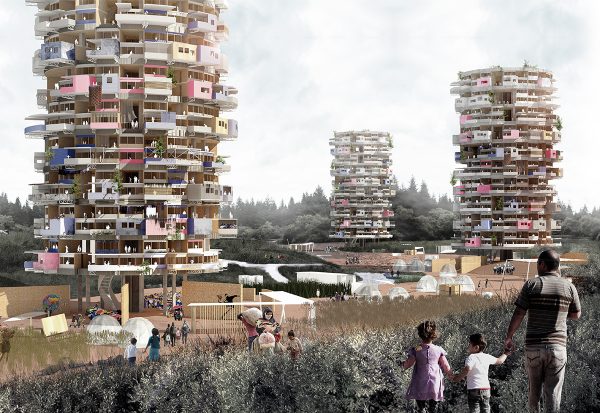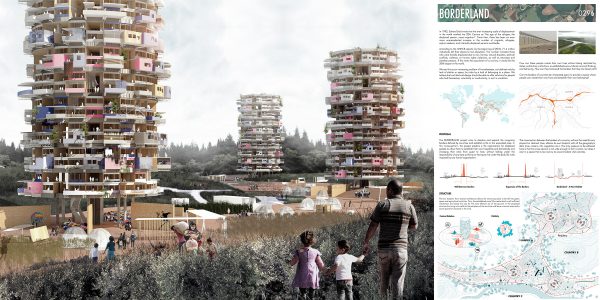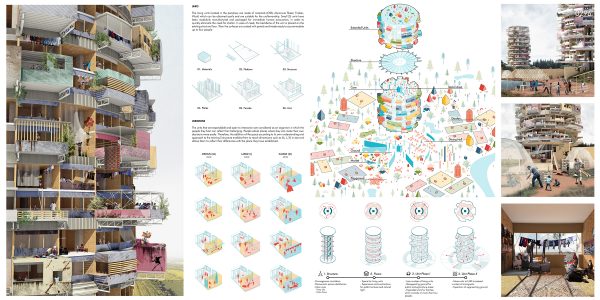Borderland Skyscraper
Honorable Mention
2019 Skyscraper Competition
Muhammed Aydem, Burak Arifoglu, Omer Faruk Demir
Turkey
In 1992, Edward Said wrote that the ever-increasing scale of displacement in the world marked the 20th Century as “the age of the refugee, the displaced person, mass migration”. Since then, there has been an even more unprecedented increase in the number of migrants, refugees, asylum-seekers, and internally displaced persons worldwide. According to the UNHCR reports, by the beginning of 2018, 71.4 million individuals left their places to live elsewhere. This number included those who were forcibly displaced due to war, famine, natural disasters, political conflicts, violence, or human rights violations, as well as returnees and stateless persons. If this were the population of a country, it would be the 20th largest in the world.
We see this as an increasing problem of homelessness, not defined only by lack of shelter or space, but also by a lack of belonging to a place. We believe that architectural design should be able to offer solutions for people who find themselves, voluntarily or involuntarily, in such a condition. How can these people create their own lives without being restricted by states, authorities, institutions, or established socio-cultural norms of thinking and behaving. How can they transcend the borders that they are faced with? Can the borders of countries be interpreted again to provide a space where people can create their own lives and establish their own belonging?
The BORDERLAND project aims to dissolve and expand the imaginary borders defined by countries and establish a life in this expanded area. In this ‘cross-section’, the project predicts a life organization for displaced people to allow them to establish their own hospitality and domesticity and changing their roles from guest to host, without feeling under the responsibility of any state authority or having to live under the daily-life rules imposed by any formal organisation.
The cross section between the borders of a country, without the need for any physical or abstract lines, obtains its own footprint with all the geography’s data (river, stream, hill, vegetation etc.). The only measure to be adhered here is that this cross-section is not wide enough to form a state, nor does it exist in a space that is too narrow to accommodate vital activities.
The low footprint from vertical architecture allows the remaining areas to be left into green space and agricultural activities. Thus, the established social life creates both a self-sufficient mechanism and paves the way for the most efficient use of the ground. In the proposed structure the living units settle to the periphery of the structure and leave a service area and a social space for everyone in the core.
The living units located in the periphery are made of materials (OSB, Aluminum Sheet, Timber, Wool) which can be obtained easily and are suitable for the craftsmanship. Small (S) units have been modularly manufactured and packaged for immediate human evacuation, in order to quickly eliminate the need for shelter. In case of need, the backbone of the unit is placed on the existing structure floor. Then the surfaces are coated with panels and made ready to accommodate up to four people.
The units that are expandable and open to interaction are considered as an organism in which the people they host can reflect their belonging. People adopt places where they can make their own decisions more easily. Therefore, the addition of the space according to its own understanding and approach to the existing S structure enables them to reach dimensions such as M, L, XL in size and allows them to reflect their differences with the place they have established.
admin via eVolo | Architecture Magazine http://bit.ly/2vujDGJ


Yorumlar
Yorum Gönder